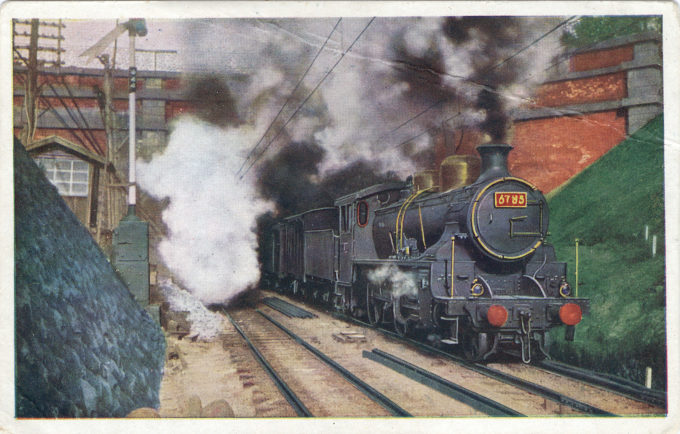
Steam freight locomotive #6785 (6760-class series), c. 1920. While considered among the finest examples of Japanese standardized locomotive design, the eighty-eight 6760-series locomotives that were ultimately produced beginning in 1914 were not as well-received as the preceding 6700- and 6750-series. The 6760s were said to have had inferior performance and had rough rides. As such, most were relegated to shunting duties. Nonetheless, the 6760-series locomotive remained in service from 1914 until 1958.
See also:
C55 Streamlined Locomotive and Mt. Fuji, c. 1940.
Tokaido Main Line Railway, c. 1930.
“The Class 6700 was a domestically-produced passenger locomotive designed by Ota Yoshimatsu. The concept of this locomotive had been planned as early as 1906 when the Japan Government Railway (JGR) wanted a standardized locomotive style for use on the JGR after the numerous private railroads, with their varied rolling stock, had been nationalized.
“Under the watchful eye of Ota, the Class 6700 locomotive was designed using technologies developed by Richard Francis Trevithick, a former inspector at JGR’s Kobe Branch during Meiji Japan who was also involved in locomotive design and was pivotal with the introduction of Japan’s first domestically-produced locomotive.
“The Class 6760 was designed by Ota and were used mainly as mixed-traffic locomotives. It is said to have been the first example of a Japanese standardized locomotive design, featuring various traits from its predecessors, the 6700 and 6750. A total of 88 were manufactured by Kawasaki Shipyards, now Kawasaki Heavy Industries.
“The 6760-series were said to have had inferior performance compared to the 6700- and 6750-series locomotives and had rough rides. As such, most were relegated to shunting duties and remained so until the end of their lives. The locomotives were retired by 1958, with none being sold to private railways. No Class 6760s survive [as museum pieces].”
– Wikipedia

